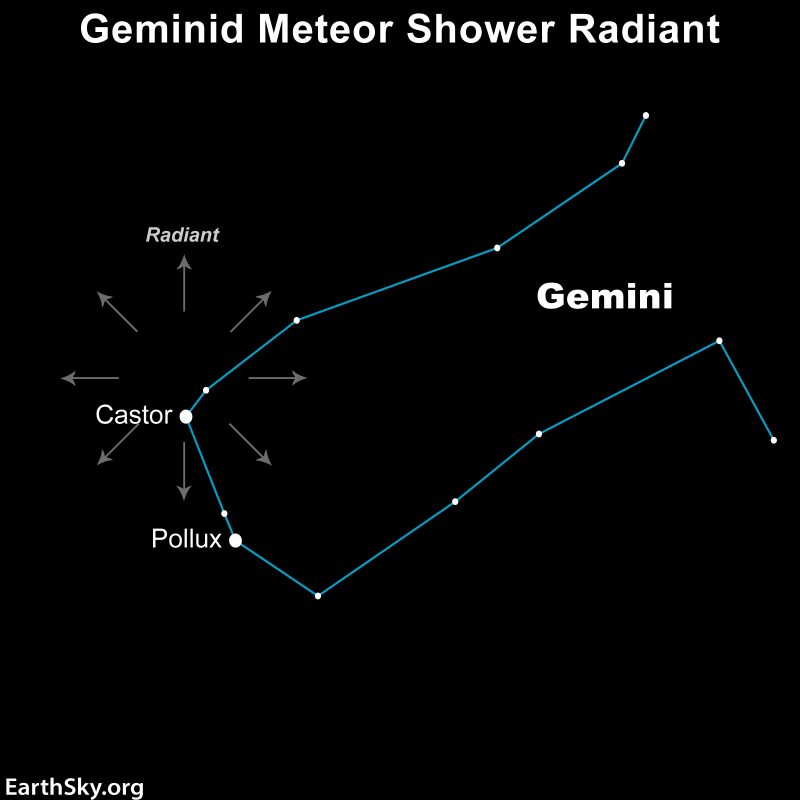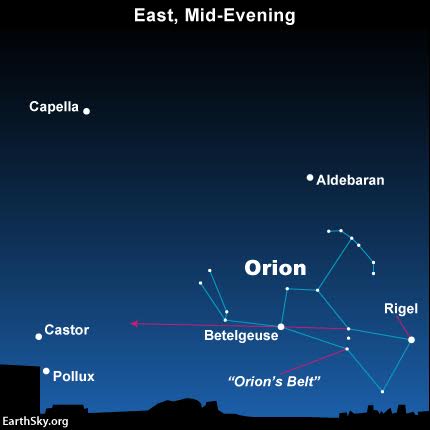
Where do you look to see December’s famous Geminid meteor shower? Simply look in an open sky, in no particular direction. These meteors fly in many different directions and in front of numerous age-old constellations. But meteor showers do have radiant points. That is, if you trace the paths of the Geminid meteors backward, they all appear to radiate from a point in the constellation Gemini the Twins. Do you need to find Gemini to watch the shower? No, but it’s fun to spot the radiant point in the night sky.
Geminid meteors come from a point near the star Castor in Gemini. To see Castor, look fairly low in the east-northeast sky around 9 p.m. This star is noticeable for being bright and near another star of almost equal brightness – its brother star in Gemini – called Pollux. Castor is the fainter of the two Twin stars.
These stars – and the Geminid meteor shower radiant – swing upward through the night and climb pretty much overhead by around 2 a.m. That’s what’s important about a meteor shower’s radiant point: the higher the radiant rises into in your sky, the more meteors you’re likely to see.
Castor and Pollux are near on the sky’s dome to another famous and very noticeable constellation, Orion the Hunter, as shown on the charts below.


Why do meteor showers have radiant points? Meteors in annual showers are bits of debris left behind by comets moving in orbit around our sun. The Geminids’ parent body is a curious rock-comet called 3200 Phaethon. Remember, the meteors are arriving from outer space. They’re essentially arriving on parallel paths.
When we see them, it’s as though we’re standing in the middle of railroad tracks, gazing down the tracks and watching the tracks converge in the distance.
Of course, the Geminid meteors don’t really come from the star Castor. The radiant nearly aligns with this star by happenstance. When Earth in its orbit crosses the orbital path of the unusual rock-comet 3200 Phaethon, bits and pieces from 3200 Phaethon burn up in the Earth’s upper atmosphere. These are the Geminid meteors, which appear in our sky some 60 miles (100 km) above Earth’s surface.
The star Castor, on the other hand, lies far outside our solar system, at a distance of about 51 light-years.

Bottom line: This post tells you how to find the radiant point for December’s Geminid meteor shower. Just know that you don’t need to find it to watch the shower. The meteors will appear in all parts of the sky.
Click here for EarthSky’s yearly meteor guide
Read more: 10 tips for watching the Geminids
Read more: All you need to know about the Geminid meteor shower











